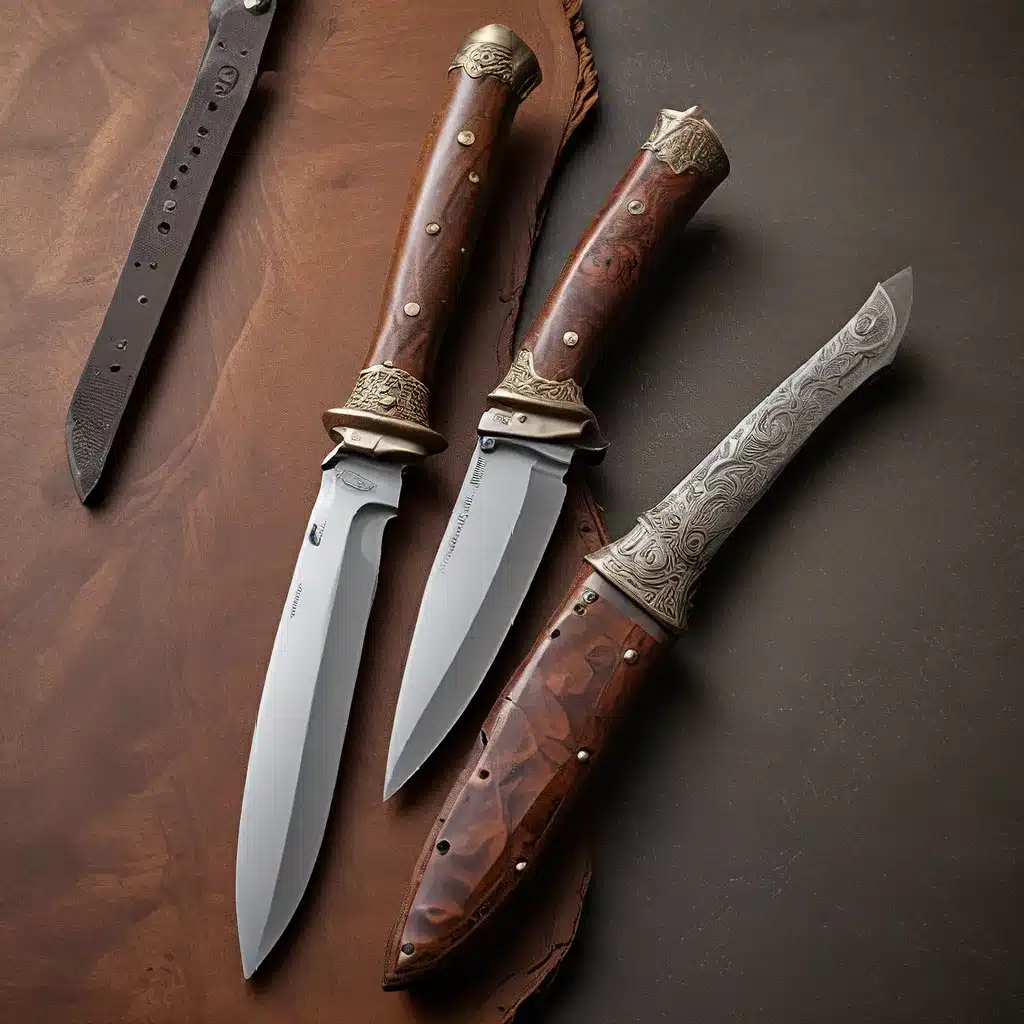
As an avid knife enthusiast, I’ve always been fascinated by the rich and captivating history behind the evolution of these essential tools. From the earliest stone implements crafted by our ancient ancestors to the high-tech, precision-engineered blades of today, the story of knife development is a veritable treasure trove of human ingenuity, innovation, and the relentless drive to shape our world.
The Dawn of Knives: From Humble Beginnings to Groundbreaking Advancements
Let’s start at the very beginning, shall we? The earliest known human-made stone tools date back a staggering 26 million years, created by our ancestors, the Homo habilis, also known as “handy man.” These primitive implements, known as Oldowan tools, were essentially stone cores with flakes removed to create a sharpened edge – the precursor to the modern-day knife.
As our ancestors evolved, so too did their tool-making abilities. The Acheulean tools, named after the site in France where they were first discovered, represented a significant leap forward. These implements featured two curved, flaked surfaces that formed a sharper, more effective cutting edge – a technique known as bifacial working. These Acheulean handaxes became the dominant tool technology for nearly 100,000 years, spreading from Africa to Europe and the Indian subcontinent.
But the true game-changer in the world of knife development was the Levallois technique, pioneered by early human species such as Homo neanderthalensis, or Neanderthals. This method involved striking pieces off a stone core to produce a distinctive tortoise-shell shape, then carefully striking the core again to produce a single, large, sharp flake – a true precursor to the modern knife. The Levallois technique allowed for the production of numerous knife-like tools of predictable size and shape, a remarkable advance in tool-making technology.
The Cutting Edge of the Past: Refining the Blade
As our ancestors continued to evolve, so too did their tool-making prowess. The Aurignacian culture, associated with the first anatomically modern humans in Europe, made a crucial innovation: the creation of long, rectangular flakes that could be detached from a stone core to form blades. These blades proved more effective at cutting than their predecessors, and their shape made them easier to attach to a handle, increasing efficiency even further.
The final major development in the history of stone tool evolution was the Magdalenian culture, characterized by the creation of small, geometric microliths – stone blades or flakes that had been shaped into triangles, crescents, and other geometric forms. When these microliths were attached to handles made of bone or antler, they became incredibly versatile tools, useful for everything from woodworking to food preparation.
The Knife’s Edge: Mastering Metal and the Transition to the Modern Era
As humanity transitioned from the Stone Age to the Neolithic Period, a remarkable shift occurred: the emergence of stone tools produced not by flaking, but by grinding and polishing. These polished Neolithic axes, adzes, chisels, and gouges were not only more aesthetically pleasing, but also more efficient and easier to sharpen.
However, the true turning point in the history of knife development came with the advent of copper and bronze. As these metals became the primary materials for tools and weapons, the Stone Age came to an end, and a new era of human civilization began. The ability to forge and temper metal blades revolutionized the cutting power and durability of knives, paving the way for the wide array of specialized tools and instruments we enjoy today.
Forging the Future: The Cutting Edge of Modern Knife Technology
In the modern age, the development of knives has only accelerated, with advancements in materials, design, and manufacturing processes that would have been unimaginable to our ancestors. From the high-carbon steel blades of traditional Japanese swordsmiths to the space-age alloys used in today’s tactical knives, the cutting edge of knife technology continues to push the boundaries of what’s possible.
Herman Knives, for example, has made a name for itself by crafting premium-quality knives that seamlessly blend time-honored craftsmanship with cutting-edge innovation. Their use of advanced materials like CPM S35VN steel and titanium hardware, coupled with meticulous attention to detail and ergonomic design, has earned them a devoted following among discerning knife enthusiasts.
But the story of knife development is about more than just the physical blades themselves. The cultural and symbolic significance of knives has evolved just as dramatically, from the ritualistic Bowie knives of the American frontier to the tactical and survival tools that have become essential gear for adventurers, outdoors enthusiasts, and first responders.
Unlocking the Secrets of the Blade: The Ongoing Pursuit of Innovation
As I delve deeper into the fascinating history of knife development, I’m struck by the relentless human drive to push the boundaries of what’s possible. From the humble stone tools of our ancestors to the high-tech marvels of today, the story of the knife is a testament to our species’ unquenchable thirst for discovery, invention, and the creation of tools that shape our world.
Herman Knives exemplifies this spirit of innovation, crafting instruments that are not just functional, but works of art. Their dedication to quality, attention to detail, and commitment to pushing the envelope are a reflection of the profound legacy that has led us to this point.
As I hold one of their beautifully designed blades in my hand, I can’t help but wonder what the future holds for the evolution of knives. Will we see the integration of advanced materials like carbon nanotubes or graphene? Will 3D printing and additive manufacturing revolutionize the way we produce and customize our cutting tools? And what other societal and cultural shifts might influence the design, function, and symbolism of the humble knife?
The truth is, as long as there are challenges to be solved and visions to be realized, the story of knife development will continue to unfold, with each new chapter adding to the rich tapestry of human ingenuity and the relentless pursuit of the cutting edge.


